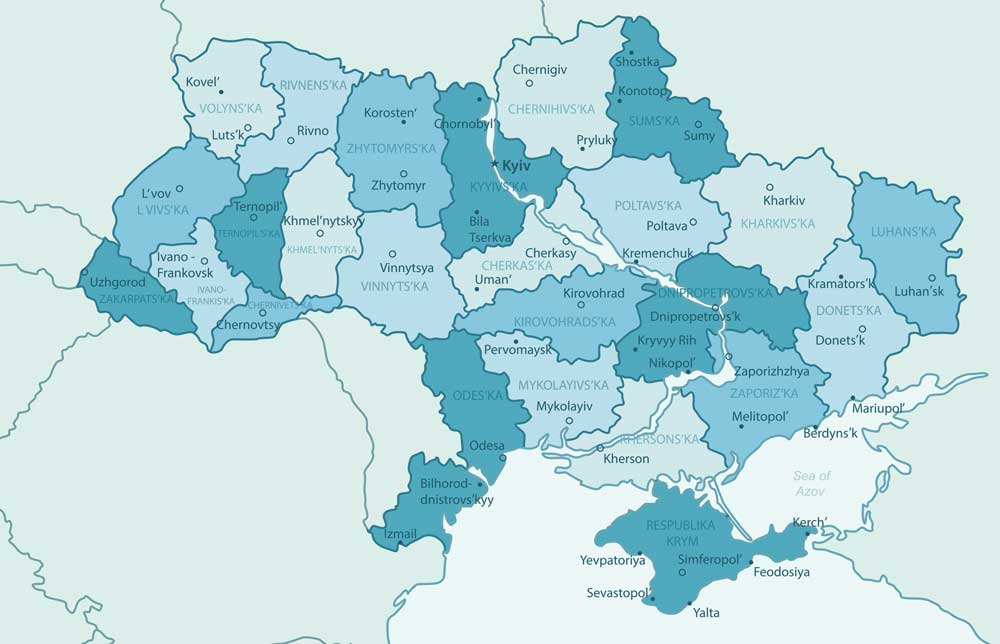UKRAINE: Coordinating the Response
By Greg Crowther [ MAG, Mines Advisory Group ]
CISR JournalThis article is brought to you by the Center for International Stabilization and Recovery (CISR) from issue 25.3 of The Journal of Conventional Weapons Destruction available on the JMU Scholarly Commons and Issuu.com.
The war in Ukraine has seen the use of ground and aerial weapons on a scale not seen in Europe for decades, causing immense devastation and human suffering. And the legacy of explosive hazards since the onset of the war, in the form of unexploded ordnance, landmines, and cluster munitions, will take decades to address. It’s a legacy that will kill and injure civilians long after the conflict has ended. This is not just a problem for the future, however, but a challenge for the present: explosive ordnance (EO) risks civilian lives, hampers efforts to deliver emergency humanitarian aid, and prevents people fleeing to safety.

The scale and nature of the unfolding conflict, with bombardments of civilian as well as military infrastructure and the reported use of a wide range of weapons, including cluster munitions1 and landmines (which were already affecting Ukraine),2 highlights the immediate devastation. It also poses immense challenges for the future mine action response.
At the time of writing, the mine action sector must prioritize any response that reduces the threat of EO in order to facilitate the flight of civilians to safe areas and to enable the safe delivery of humanitarian relief.
A mine action response is needed urgently but cannot be delivered in isolation. What is required is coordination with and co-ownership by donors, national actors, UN agencies, and other humanitarian organizations, including local civil society groups, as well as those mine action operators who have the experience and expertise to respond on the ground.
The risks of an uncoordinated response or unilateral decision-making are all too apparent. At best, money is wasted and resources are not properly prioritized. At worst, funding is misused, effort is duplicated, and operations are carried out unsafely or are prioritized poorly.
The Sphere Core Humanitarian Standards3 that explicitly enshrine coordination, effectiveness, and timeliness are worth restating at times like these, when the understandable urge to act quickly, and emotionally, might lead to poor decision-making.
If coordination is one cornerstone of emergency response, the other must be preparedness: an international donor community that can quickly mobilize funding to address urgent needs.
At the time of writing, the most urgent actions—emergency risk education and real-time tracking of reported explosive impacts—are already underway in Ukraine. But at the point of peace or a long-term ceasefire, how confident can we be that the humanitarian mine action (HMA) and international donor communities will be ready to implement the kind of sustained and large-scale programming required?
This response will be critical to recovery and eventual reconstruction; the success of its implementation is dependent on planning, good practices, and the use of both national and international expertise. It will require capital investment, recruitment, training, and considerable engagement and coordination with a host of stakeholders, not least the affected communities.
As soon as effective survey and clearance are safely feasible, the slow process of rebuilding communities and enabling Ukrainians to return to their homes can begin. This will reduce pressures on host communities and, most importantly, enable ordinary people to begin to heal from the trauma of war and exile.
In northern Iraq, more than twenty years after the end of the second Gulf War, MAG teams are still finding and clearing EO that continues to hamper development and cost lives. More recently, central Iraq has suffered the devastating consequences of the Islamic State of Iraq and Syria (ISIS) incursion, a plight that rightly drew substantial international support. Yet the remaining legacy of war in the north of the country is all too often forgotten. Tellingly, as fresh conflict dominates the international consciousness, even support to the more recent crisis is beginning to dissipate.
The lesson from Iraq and from other major conflicts in places like Syria, Myanmar, and South Sudan must be learned in Ukraine: the international donor community, working in partnership, has to put in place the right mechanisms for an effective mine action response.
Those mechanisms must first respond safely to the most urgent needs and, second, they must incorporate the structures and capacities needed to recover from the aftermath of war in the longer term. Critically, any response must be coordinated between donors and must not jeopardize existing commitments to developing or fragile nations such as Angola or Laos that are still dealing with the long aftermath of conflict.
The tragedy in Ukraine is having an enormous impact on the civilian population, causing immense physical and psychological harm. Sadly, the lethal effects of landmines and other EO continue even when the guns fall silent. Preparing to address this threat must be at the forefront of the humanitarian response. This protracted and deadly legacy will blight Ukraine for many years to come, making both an immediate and sustained donor response critical to limiting human suffering and supporting the reconstruction and rebuilding of Ukraine.
 Greg Crowther
Greg Crowther
Director of Programs
MAG
Greg Crowther is Director of programs at MAG. He has more than two decades of experience in HMA, including in Angola, Cambodia, Mali, and Vietnam.

